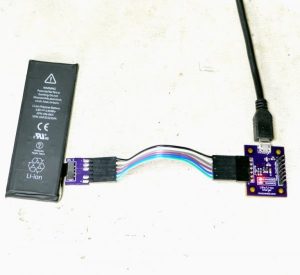Troubleshooting iPhone problems can be a daunting task sometimes considering how complicated they are. It’s easy to overlook the simple things and on occasion you may replace parts that don’t need replacing. Batteries are no exception. I have seen technicians often replace batteries when they may not necessarily need to be or ignore the fact that they could be the cause of the issue at hand. To remedy this I designed a basic iPhone battery charging breakout board system. The system can charge a battery, has the option for expansion to support newer/other batteries and breaks out the battery status pins which can be read from a microcontroller or some other means. It consists of 6 battery connector boards (iPhone 4, 4S, 5, 5S/C, 6, 6+) and a main charging board.
Use Cases
Sometimes a battery will show no voltage when tested with a multimeter. It is possible that the LiPo cell is in fact completely dead although this typically means the battery has gone into protection mode. This can be caused by various reasons including liquid damage short, over voltage/current lockout and under voltage lockout. My battery system can revive or re-activate a battery that has entered protection mode by simply connecting it to the main charging board.
From time to time I will get a phone in for repair with a (very) low battery and will not boot up because of that fact. The repair may be as simple as a screen replacement. With this battery system you can leave the battery in the case and connect it to the charger while you move the home button, front sensor flex to the new screen. You could even create a short extension cable from the battery board to the mainboard.
As a technician I have a set of test parts for the various common phones I repair. The batteries do not usually get a full charge during the testing process. With this system you can charge your test batteries without the need for an actual phone.
Battery Boards
A single battery board can be connected to the mainboard at a time. Battery boards connect to the mainboard via 6 pin header with 1 pin missing (keyed to prevent incorrect connection). Not all the pins are needed for every battery. For example, the 4, 4S and 5 batteries have NTC thermistor pins but newer iPhones do not and thus are not connected. All 5 pins are routed to a header on the mainboard for easy access. The purpose of the separated battery boards is to allow for additional (new) connectors. I have not yet ordered any iPhone 6S series battery connectors so I do not have boards designed for them. I have, however, designed some for other devices that worked with older revisions of this battery system. I may consider adding additional battery boards in the future (6S, 6S+, Samsung, etc).
Read more: iPhone Battery Charger / Tester

